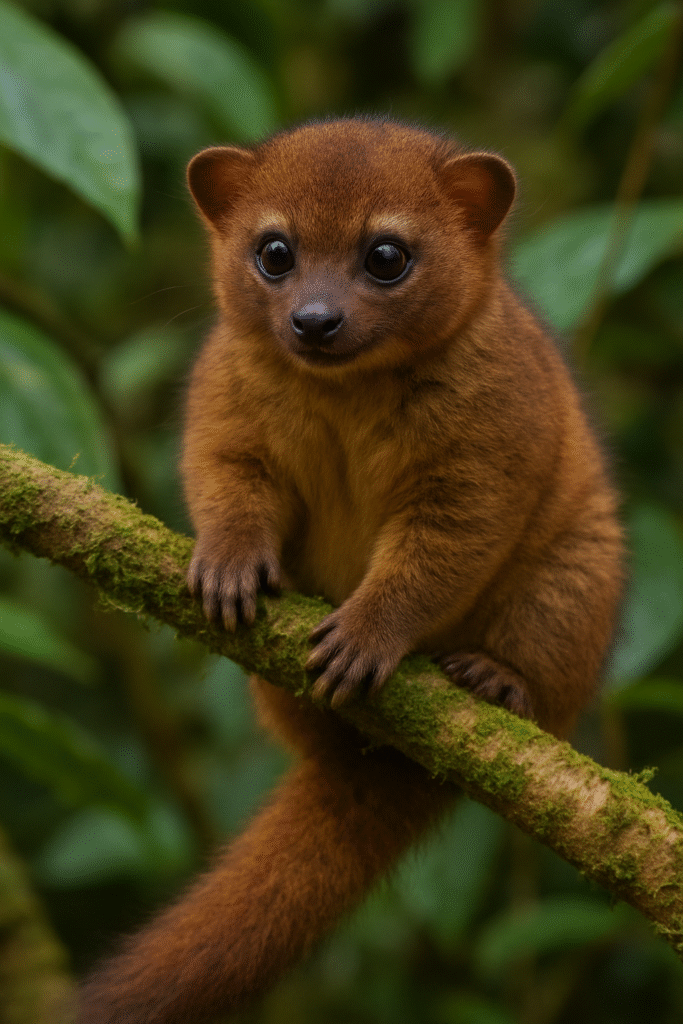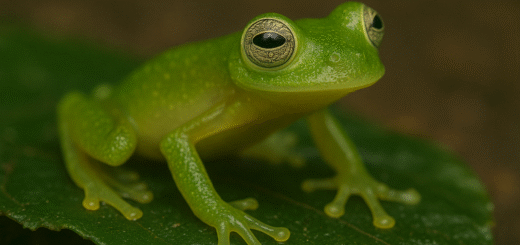Olinguito: The Adorable Tree-Dwelling Mammal You’ve Probably Never Heard Of
In 2013, scientists made an astonishing discovery in the cloud forests of South America: a new species of mammal! Meet the Olinguito (Bassaricyon neblina), a small, nocturnal creature with wide eyes, a fluffy tail, and a personality that instantly captured the hearts of wildlife enthusiasts. This adorable animal remained hidden in plain sight for decades—mistaken for its relatives—until modern research finally revealed its uniqueness.

What Is an Olinguito?
The Olinguito is a member of the raccoon family (Procyonidae). Weighing only about 2 pounds (900 grams) and about 14 inches in length (plus a bushy tail), it is the smallest known member of the Bassaricyon genus. With its teddy bear face, silky orange-brown fur, and quiet nature, the olinguito is as photogenic as it is mysterious.
Olinguito Habitat
Native to the cloud forests of Colombia and Ecuador, olinguitos live in high-elevation rainforests between 5,000 and 9,000 feet (1,500–2,700 meters). These lush, mist-covered environments are rich in biodiversity and ideal for arboreal creatures like the olinguito, who spend nearly all their time in trees.
What Do Olinguitos Eat?
Olinguitos are omnivores, but their diet leans heavily toward fruits (frugivorous). They also eat insects, nectar, and small vertebrates, playing a vital role in seed dispersal and pollination. Their preference for fruit makes them an important part of their ecosystem’s balance.
Behavior and Lifestyle
- Nocturnal: Most active at night, using their excellent night vision and agility to move through the treetops.
- Solitary: They prefer to live alone except during mating or when raising offspring.
- Arboreal: Olinguitos rarely come down from the trees and are highly adapted to forest life.
One of the most remarkable things about olinguitos is how long they went unnoticed as a distinct species. Museum specimens had existed for decades, but researchers only realized their uniqueness after detailed analysis of DNA, skull shape, and behavior.
Why the Olinguito Discovery Matters
The discovery of the olinguito was the first new carnivorous mammal identified in the Western Hemisphere in over 35 years. It serves as a powerful reminder that there are still hidden species in the world, even in areas previously thought to be well-studied.
This find also emphasizes the importance of preserving cloud forests, which are rapidly shrinking due to deforestation and climate change.
Olinguito Conservation Status
Although not currently listed as endangered, the olinguito’s limited range and habitat vulnerability make it susceptible to environmental changes. Conservationists stress the need to protect its habitat to prevent population decline.
Fascinating Olinguito Facts
- They can jump between branches with ease, thanks to sharp claws and strong limbs.
- Each olinguito has a distinct vocalization, used for communication in the dense forest.
- Olinguitos typically give birth to a single baby at a time.
- The discovery was aided by DNA testing, showing how technology helps uncover hidden biodiversity.
Final Thoughts
The olinguito is a charming and elusive reminder that the natural world still holds secrets. With its fluffy appearance, tree-hopping acrobatics, and vital ecological role, the olinguito has captured the imagination of scientists and nature lovers alike. Protecting these forests means safeguarding one of nature’s cutest surprises.








